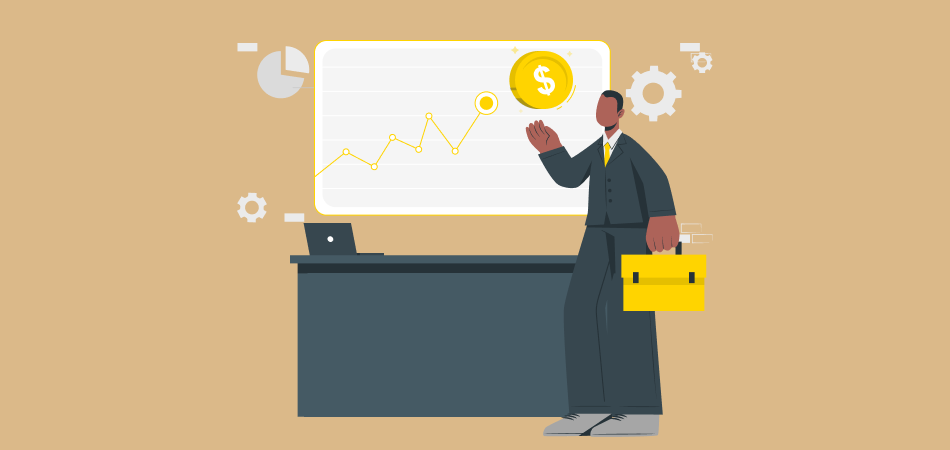Dropshipping Business Ideas for New E-commerce Entrepreneurs

As we head into 2024, the field of e-commerce continues to grow. Within this field, forecasts indicate that the dropshipping market, especially, will continue to grow, from a market size of $284.55 million to $351.81 million in the upcoming year. These same forecasts predict continued growth up to 2032.
Considering these predictions of steady growth, it’s not surprising to see many new businesses entering the market. However, roughly 90% of dropshipping business ideas fail. There’s a wide variety of reasons for this, ranging from a lack of market understanding to inefficient marketing.
That means if you’re dead set on entering the market, you should have at least a few dropshipping business ideas on hand before making that jump. So, we’ve gathered up some dropshipping business ideas as well as some general information to help things get started.
What Is Dropshipping
First things first, though, you’ll need to understand what dropshipping is. This is especially important because the dropshipping business model is rather unique. Rather than selling products that they own, dropshippers advertise products, collect orders for those products, and then forward those orders to the distributor of the product. Sounds a bit complicated, right? Let’s look at it another way.
Let’s say that you purchase a product from a reputable brand online. They operate their online storefront, and when they receive your order, they send that product on its way. In this case, there are two main parties: the customer and the supplier. Things work a bit differently once dropshipping enters the equation.
Under the dropshipping business model, a dropshipper operates a digital storefront that lists the supplier’s products. When a customer places an order through the storefront, the dropshipper receives their order information in place of the supplier. They then forward that information to the supplier, who ships the product(s) directly to the customer. One important distinction to keep in mind is that dropshippers do not keep stock on hand. Instead, they ship out products as orders arrive. In this sense, dropshippers are more like middlemen or advertisers rather than “true” retailers.
Why Dropshipping
There are quite a few advantages to dropshipping. Here are some of the more relevant ones. Many of these are a by-product of the digital era and will remain relevant in the coming years
Low startup costs
One of the biggest advantages of dropshipping is that it cuts out many aspects of the traditional business model. Warehousing, shipping, and many other logistics are handled by the supplier, effectively eliminating the financial burden of the dropshipper. In extreme cases, the startup cost of a dropshipping business is a website and a laptop.
Low overhead
Many of these startup costs are also recurring costs– meaning that business owners will have to pay them regularly. However, dropshippers similarly cut out these expenses by eliminating the use of warehouses and fulfillment centers. As such, the costs to maintain a dropshipping business are exponentially lower than that of traditional brick-and-mortar storefronts. Overhead costs will grow as business expands but will typically remain lower.
Flexibility
The vast majority of dropshipping operations completely lack any sort of physical location. Being a purely digital business means that you can run it from any device with internet access. Many dropshippers take advantage of this, opting to realize their dropshipping business ideas from the comfort of their home. Others choose to do so while seeing as much of the world as possible.
Comparatively low risk
To be clear, there’s always a risk to starting a business. Dropshipping business ideas are no different. If your business goes under, you’ll be losing out on your investments, both monetarily and time-wise. In the worst-case scenarios, losing a business can ruin someone’s livelihood. The fact that dropshipping requires minimal startup and overhead capital greatly alleviates this pressure.
Downsides of Dropshipping
Dropshipping may seem like a get-rich-quick scheme, but there’s no such thing as a perfect business model. Dropshipping has its fair share of downsides, as well. Here are some things that you should consider before investing your time and money into starting your own dropshipping business.
Competition
New businesses enter the market every day, armed with their dropshipping business ideas. This is true for any field, but the low cost of entry for dropshipping greatly accelerates this process. Having so many competitors naturally drives prices down, making it increasingly difficult to carve out a successful niche. This directly contributes to the next downside.
Lack of control
While the hands-off nature of dropshipping brings many benefits, it also comes with a few demerits. If you’re a wholesaler or traditional retailer that stores your inventory, chances are you’ll have some sort of inventory management software like inFlow, for example, which would give you a real-time look at what you have on hand and what orders you can or can’t fulfill. This isn’t true for dropshippers, and taking orders you have no way of fulfilling can tarnish your reputation.
Things to Keep in Mind
Because the market is so competitive, it pays to start with a few dropshipping business ideas before entering. Starting with a game plan can help you stand out from the competition. Having a course of action can help steer the way in a rather turbulent market for those already established.
Research market trends
The e-commerce market is naturally volatile. The internet is an odd place, and it’s more susceptible to trends in ways that traditional stores aren’t. This is even more true for dropshipping, as it depends heavily on supply lines and communication between multiple parties.
Researching market trends before starting and continuing that research is key to minimizing the effect of market volatility.
Pick profitable products
Most businesses need sales to maintain profitability. Dropshipping is no exception. High-volume, high-value products mean greater overall income. Scouting products beforehand is also important to determine whether they have an upward or downward trend. Selecting your products wisely is one of the most important parts of dropshipping, so we’ll be talking about this more in a bit.
Don’t be afraid to transition away
While dropshipping is a viable business model all on its own, many also use it as a stepping stone. Because of the low startup and low overhead cost, it’s possible to grow a brand while still searching for products. And once you identify those products, you can make the jump from being a dropshipper to being a wholesaler.
Find reliable suppliers
We touched on this a little already, but dropshippers rely heavily on suppliers to maintain their reputation. Suppliers who frequently ship incorrect, damaged, or otherwise faulty products will invariably affect your bottom line. Unhappy customers don’t just lose repeat sales; on the internet, they’ll also drive away potential customers. You’ll also be in charge of managing those unhappy customers.

|
Find Better Supplier For Products DSers Supplier Optimizer - One click to filter out the most proper suppliers for your products |
As such, it’s worth taking the time to establish relationships with reliable suppliers. Platforms like AliExpress have been in the market for quite some time, and offer quality products at low prices.
Dropshipping Business Ideas
While one of the appeals of dropshipping is being able to market many different products, that’s not always the best. Diverting your focus among many different products could lead to a dip in sales in other areas. As such, it’s typically better to focus on a niche rather than expanding your catalog to include irrelevant products. With that in mind, here are some of the tried-and-true niches you should consider adopting.
Clothing
Given its necessity in day-to-day life, it’s not surprising that apparel tends to perform well in e-commerce models. However, clothing has also become an avenue for self-expression over the years, pushing owners towards more free-spirited designs. This creates a wide-ranging demand for a product that’s already a necessity. It helps that clothing is also an evergreen product, meaning that it’s in demand year-round.
Consumer electronics
Consumer electronics, ranging from smart home devices to everyday phones, continue to see consistent growth. Part of this is due to the increase in remote work following the effects of COVID-19. Remote workers often need new gear, whether that’s a new computer or a better router for faster internet.
Gaming peripherals
While gaming peripherals fall under the umbrella of “consumer electronics,” it’s a market of its own. It’s also a market that expects to see stable growth over nearly every relevant metric. In 2024, forecasts predict that the market size will reach a staggering $282 billion.
Outdoor equipment
Another interesting side effect of the lockdown was its effect on outdoor activities. While public locations and entertainment services shut down, outdoor activities like camping or hiking grounds would remain open. While the pandemic is mostly over, the effect continues to grow, and the market for outdoor equipment continues to grow.
Conclusion
Starting a new business is always scary. That remains true for dropshipping despite the business model’s accessibility and low entry cost. In some instances, it may seem even scarier, considering how quickly the e-commerce industry moves. As a result, you want to have some dropshipping business ideas on hand before making the jump.
It also pays off to invest in proper tools so that you can focus on managing the storefront and searching for new products. Tools like DSers take care of as much as possible, letting you focus on building your business.











 Company
Company
 Why Choose DSers
Why Choose DSers
 Blog
Blog
 Help Center
Help Center




 Live Chat
Live Chat